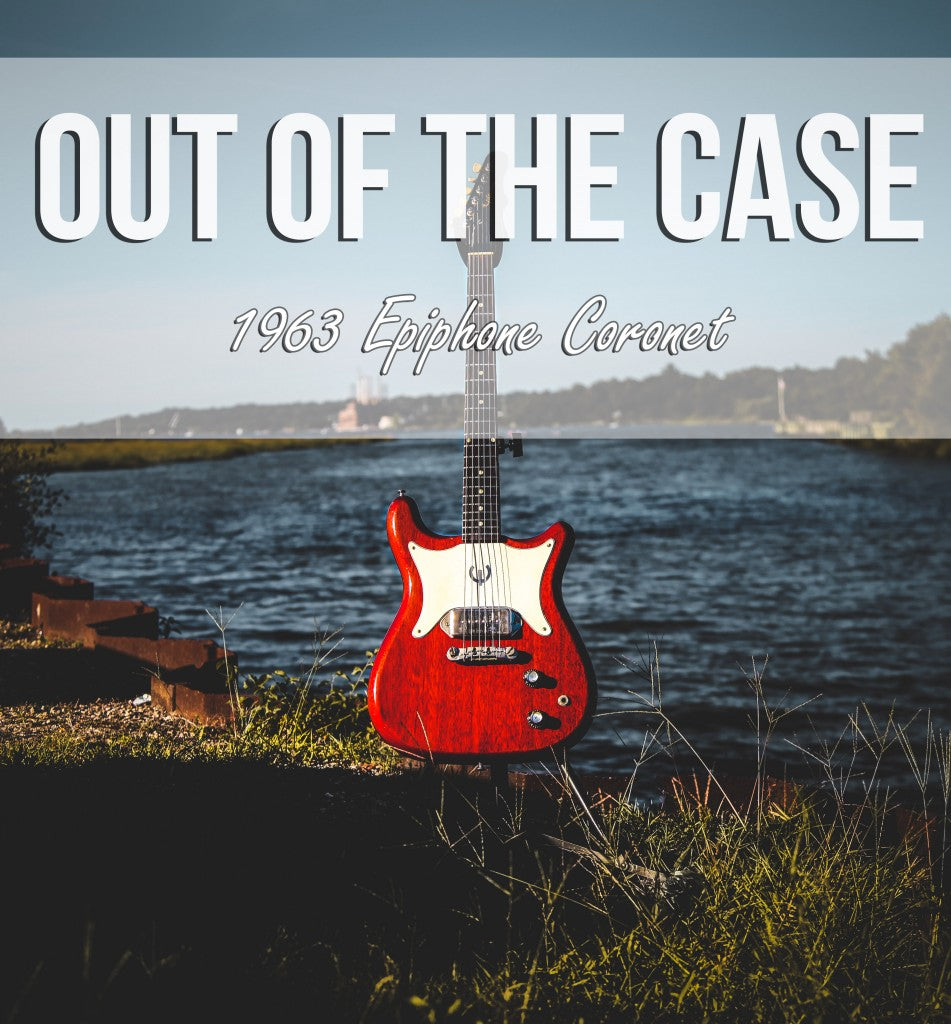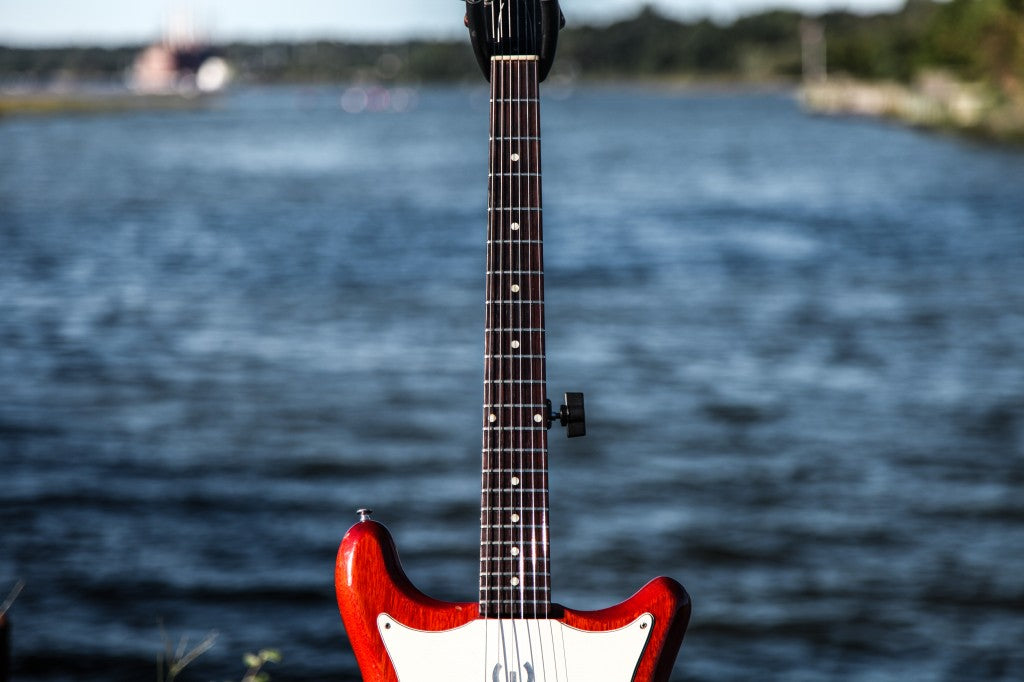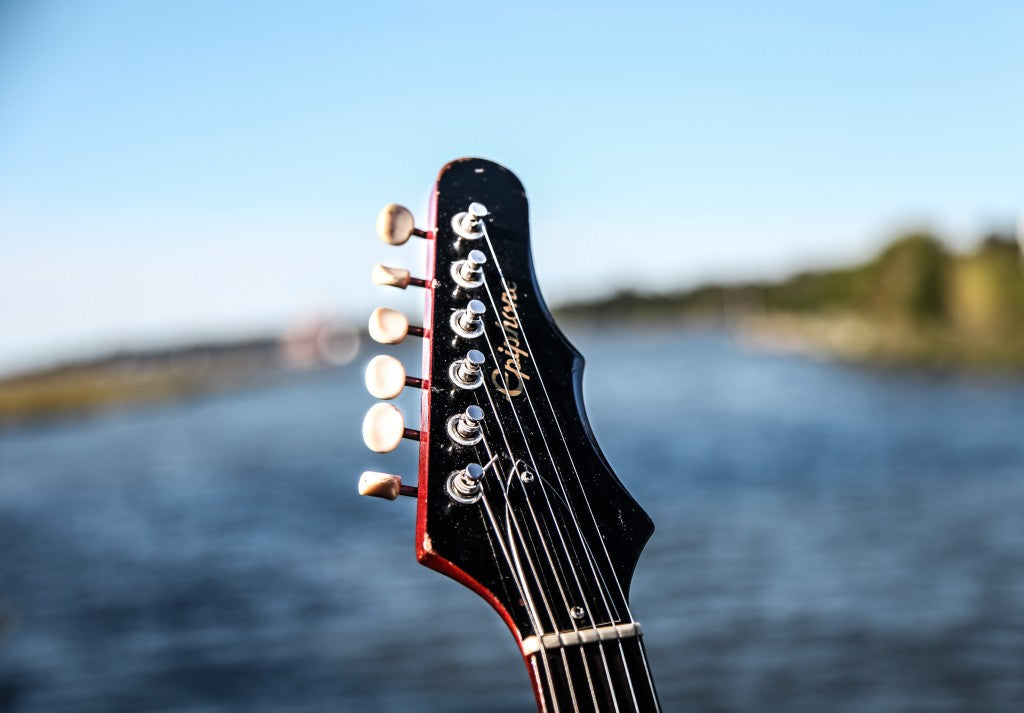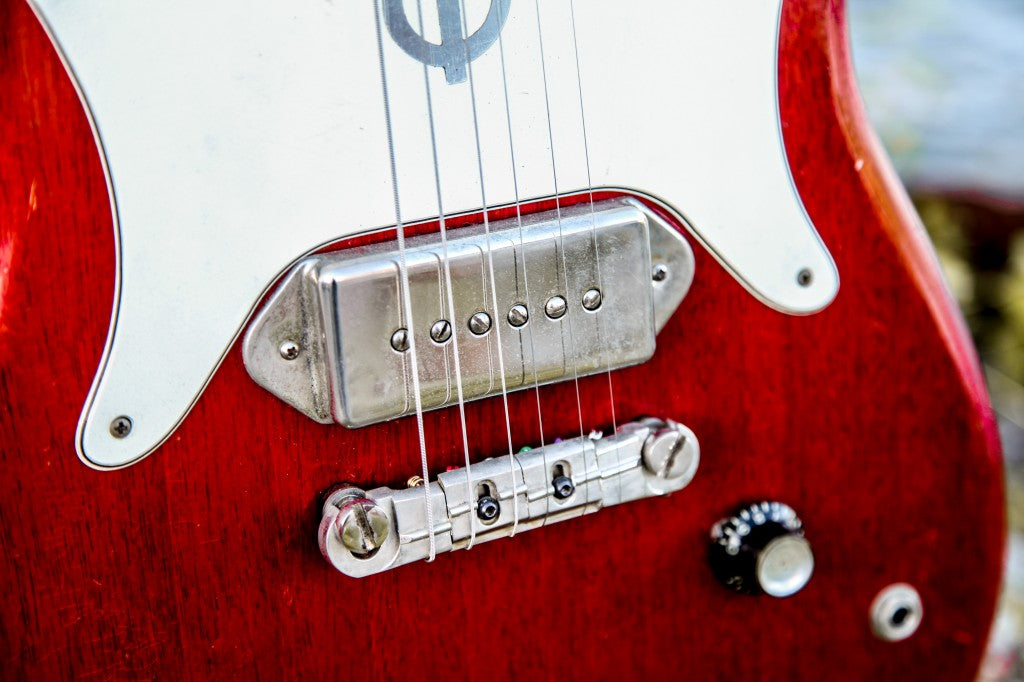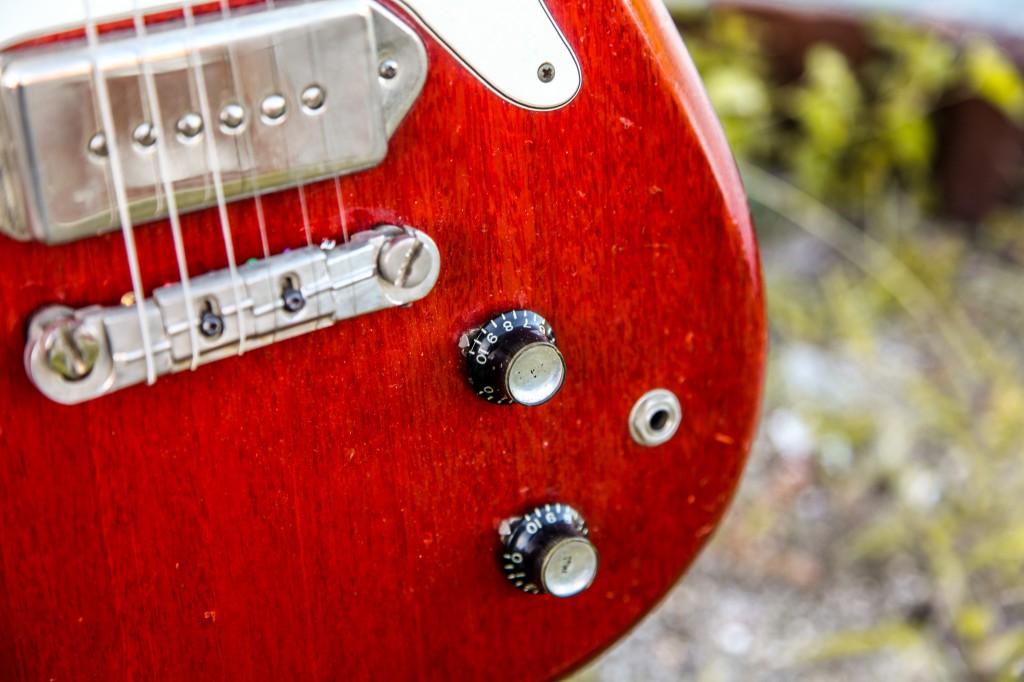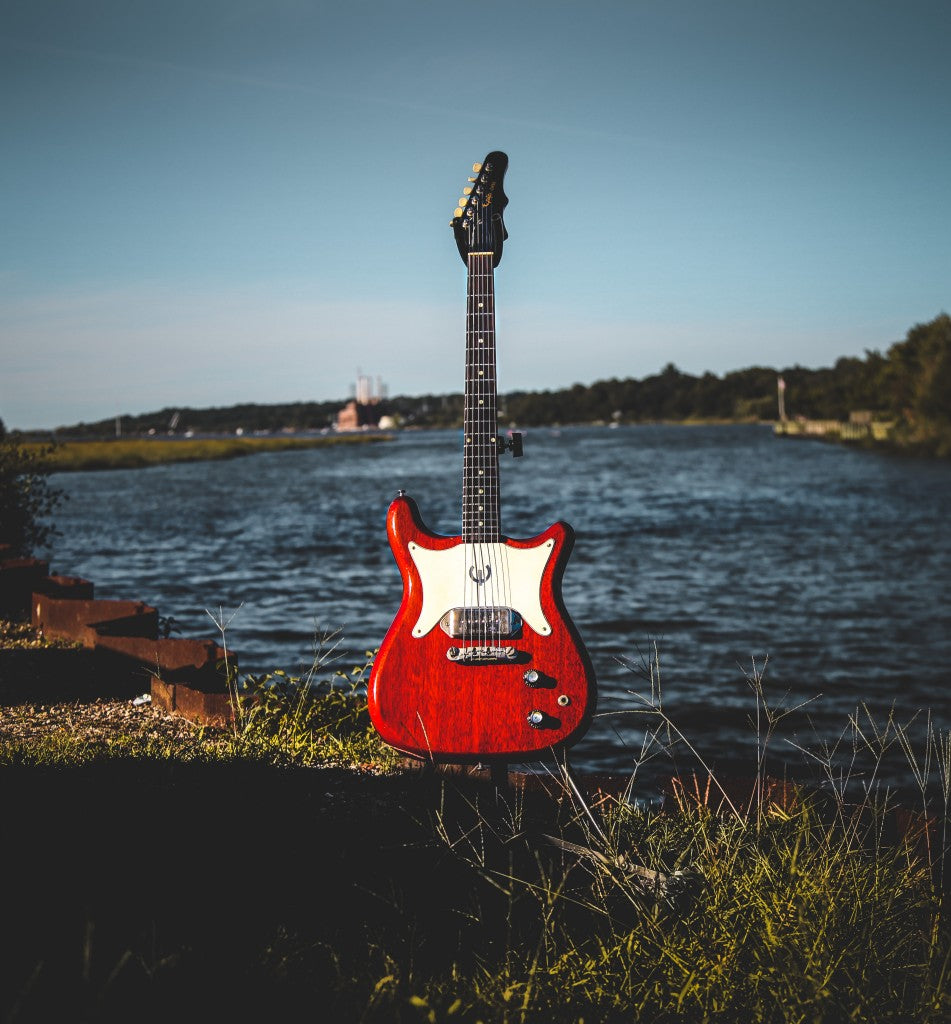Out Of The Case: 1963 Epiphone Coronet
By Mike Bieber
In 1995, I discovered that amazing, preowned guitars could be had for not a lot of dough-re-mi. That was then, of course. My first discovery was a 1968 Gibson SG Junior with a black “soapbar” P-90 for around four bills. Then came a real 1959 Les Paul TV Junior for around a grand. That was because it had a headstock break and various other issues. It wasn’t a collector’s guitar, hardly, but as a “player” it kicks some Junior-style butt!
At that time, I also woke up and discovered the great midrange wallop, sparkle, and clarity of those P-90 single coil p’ups that I’d heretofore dismissed as “dumb.” Combined with those guitars’ mahogany bodies and the JCM 800 head and cabinet that I gigged with, I discovered the power and majesty of electric guitar like I’d never felt before.
About a year later I walked into a sorta shady guitar store in Manhattan and saw three solidbody Epiphone Coronets on the wall; two had three-on-a-side headstocks and symmetrical bodies, while another had an asymmetrical body with six-in-line tuners. All were under five-hundred, and I bought the “lone wolf.” It’s a 1963 model that’s become the most treasured piece in my guitar collection, which numbers a whopping five guitars. I was looking for something unique, with a pawnshop vibe yet completely playable. And something that looked aesthetically pleasing in a downtown New York City kinda way. (I was wearing vinyl pants at the time.)
So, what’s the rub with this relatively obscure but raved about guitar? Let’s backtrack a bit with some history. Epiphone first used the Coronet name on some low-end archtops starting in 1930s. When Gibson purchased Epiphone in 1957, it revived the Coronet 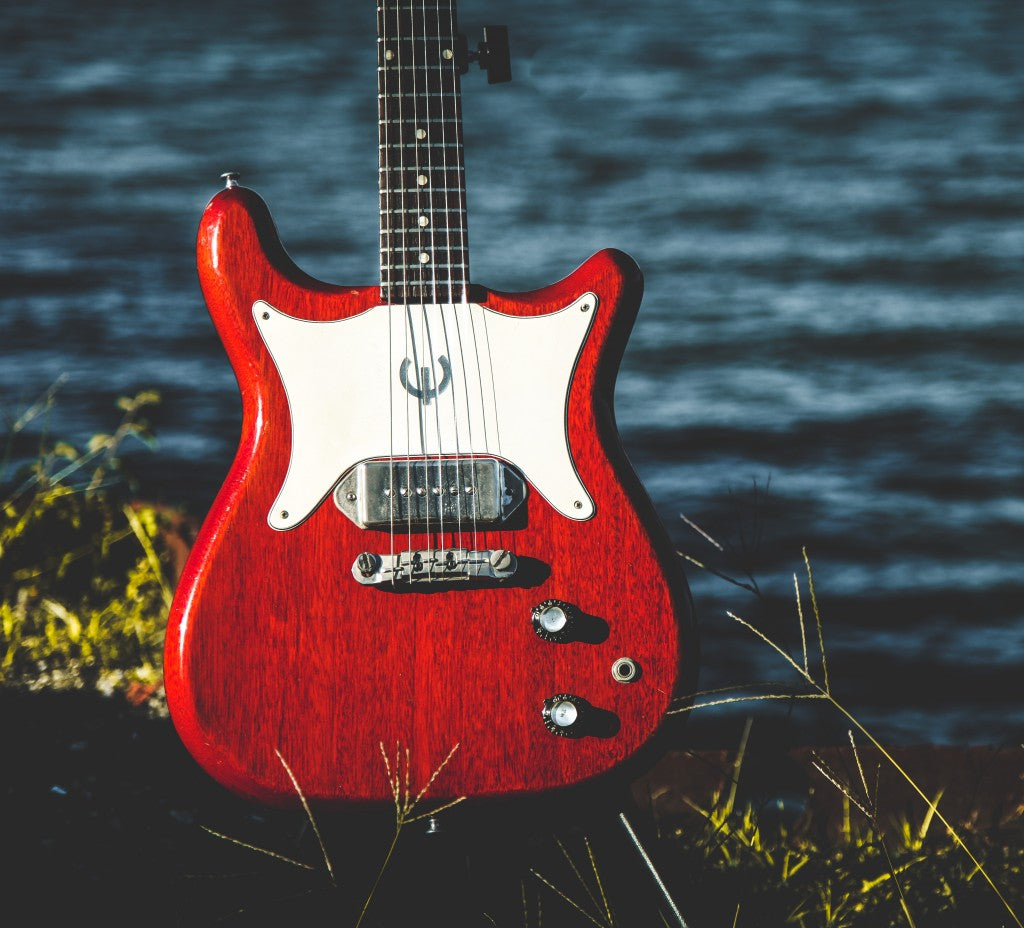 name on a solidbody instrument intended for students. This premier incarnation of the solidbody Coronet was lightweight, well-balanced, and easy to play, and it looks quite different from the Coronets offered in the ‘60s. In particular, it has a 1.75” slab body with a three-on-a-side headstock and an art deco-style nameplate. These guitars also have one very small Epiphone New York single-coil pickup with a tone that’s somewhat anemic compared to the P-90. They also had some very Deco-style control knobs.
name on a solidbody instrument intended for students. This premier incarnation of the solidbody Coronet was lightweight, well-balanced, and easy to play, and it looks quite different from the Coronets offered in the ‘60s. In particular, it has a 1.75” slab body with a three-on-a-side headstock and an art deco-style nameplate. These guitars also have one very small Epiphone New York single-coil pickup with a tone that’s somewhat anemic compared to the P-90. They also had some very Deco-style control knobs.
In 1960, Gibson redesigned the Coronet with a symmetrical, thinner, rounded body, the classic P-90 “dog ear” single-coil pickup, and cherry finish. Another update came in 1963 when Gibson made the body asymmetrical—with the treble horn slightly shorter—and a six-on-a-side headstock. My example dates to 1963. Like other “student” guitars such as the Les Paul Juniors, the ’63 Coronet is a wolf in sheep’s clothing, thanks to a very potent P-90 that drove the amp into oblivion when the master volume was bypassed. Playing it is complete thrillsville: loud and clear unplugged with low action, a somewhat thicker neck profile, and great balance between the neck and body. Plugged in you can truly hear the wood, even in medium and higher-gain situations. Certainly, the Coronet isn’t a metal guitar, but as a veritable rock and roll animal you should run like hell.
From 1963 until the Coronet was discontinued in 1966, it was offered in a few rare finishes that included Silver Fox (which actually looks a bit greenish) and yellow. Moreover, a handful of Coronets exist with the name Dwight on the truss rod cover and often with a silver D on the pickguard. These guitars were made specifically for a retailer, Sonny Shields Music in East St. Louis, Illinois. It’s owner was Sonny “Dwight” Shields and the guitars were sold to students who studied guitar there. Following the Coronet’s production end, Gibson took its shape and applied it to a handful of more “upscale” guitars such as the Crestwood, which found favor with guitar monsters like Johnny Winter and pre-Stratocaster Jimi Hendrix. Wayne Kramer and Fred “Sonic” Smith from the MC5 also used the Crestwood to “kick out” their jams and incite riots in the streets.
The Coronet, meanwhile, found favor with raw and impassioned rockers like Steve Marriot. Ace Frehley had one when he started out, too. Guitar trailblazer Johnny Marr loves his as does Mod revivalist Paul Weller, who rocks a Dwight version. Ultimately, about four-hundred bucks later, it’s the best guitar I own.
Photography by Walter Bryant



